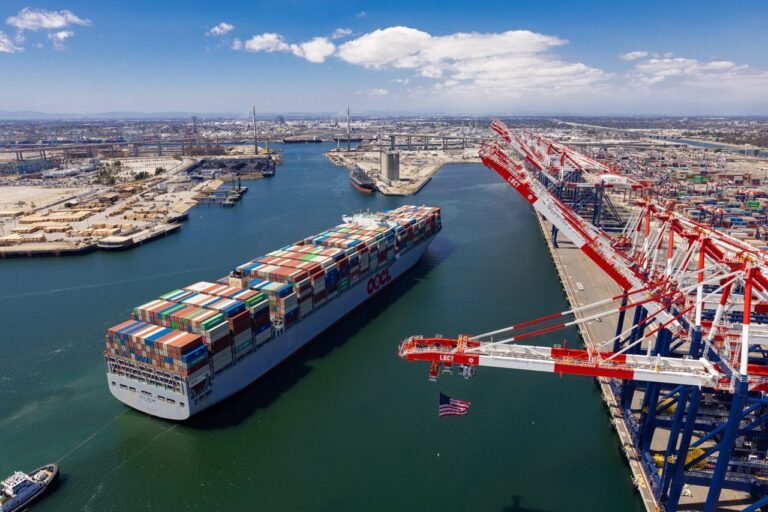The Impact of Tariffs on West Coast Ports
The Port of Long Beach experienced a significant 8.2% decline in cargo throughput in May, processing 639,160 TEUs as tariffs continue to impact global trade flows. The neighboring Port of Los Angeles also reported decreased volumes, handling 716,619 TEUs, marking a 5% reduction compared to the previous year.
At Long Beach, imports fell 13.4% to 299,116 TEUs, while exports decreased 18.6% to 82,149 TEUs. The only positive movement came from empty containers, which saw a modest 3.2% increase to 257,895 TEUs.
The Port of Los Angeles saw similar declines, with loaded imports dropping 9% and exports falling 5% compared to the previous year. Gene Seroka, Port of Los Angeles Executive Director, noted that May represented their lowest monthly cargo output in over two years.
Despite current challenges, port officials remain optimistic about a near-term rebound. Mario Cordero, Port of Long Beach CEO, anticipates a cargo surge coinciding with the peak shipping season. “We remain cautiously optimistic that import cargo will rebound at the end of June and into July just in time for the peak shipping season, when retailers stock the shelves with back-to-school supplies and begin preparations for the winter holidays.”
The anticipated surge is largely attributed to a temporary reduction in tariffs. Following the Trump administration’s implementation of a 145% tariff on Chinese goods in April, many retailers had suspended or canceled orders. However, activity has resumed after tariffs were reduced to 30% with a 90-day pause extending until August 12. Similar temporary pauses on reciprocal tariffs with other nations will last until July 9.
Looking ahead, the National Retail Federation’s Global Port Tracker forecasts a mixed outlook for U.S. containerized imports. While June through August should see increased activity as importers take advantage of the tariff pause, volumes are expected to decline sharply in the latter part of 2025. September imports are projected to fall 21.8% year-over-year, with October showing a 19.8% decrease.
Despite recent challenges, both the Port of Long Beach and Port of Los Angeles have shown positive year-to-date performance. The Port of Long Beach has processed 4,042,228 TEUs in the first five months of 2025, representing a 17.2% increase from 2024, while the Port of Los Angeles has handled 4,063,472 TEUs, up 4% from the same period last year.
Subscribe for Daily Maritime Insights
Sign up for gCaptain’s newsletter and never miss an update
— trusted by our 109,335 members

